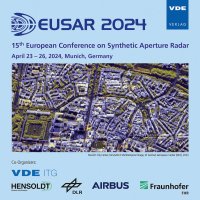Optimizing Φ-Net Using TanDEM-X Bistatic Data for High-Resolution DEM Generation
Konferenz: EUSAR 2024 - 15th European Conference on Synthetic Aperture Radar
23.04.2024-26.04.2024 in Munich, Germany
Tagungsband: EUSAR 2024
Seiten: 6Sprache: EnglischTyp: PDF
Autoren:
Dell’Amore, Luca; Soledade Matos Amorim, Vinicius; Rizzoli, Paola
Inhalt:
Φ-Net is a deep residual learning architecture and is currently one of the most accurate state-of-the-art approaches for Synthetic Aperture Radar interferometric (InSAR) phase filtering and coherence estimation. The network has proven to outperform classical denoising strategies concerning the estimation of InSAR parameters and is therefore very suitable for the generation of high-resolution Digital Elevation Models (DEMs). However, some limitations are shown over critical areas characterized by low signal-to-noise ratio (SNR) or by geometric distortions, i.e. shadow and layover. There, Φ-Net wrongly reconstructs the InSAR phase and inserts artefacts, thus leading to an unreliable input for typical phase unwrapping algorithms. Moreover, being trained with synthetic data only, there is still potential for an optimization which is closely related to the patterns that can be found in real InSAR data. In this paper we propose a preliminary analysis based on TanDEM-X bistatic data which aims at providing insights to overcome the current limitations of Φ-Net. In particular, we address the problem of removing artefacts in the filtered InSAR phase, which would allow for the generation of a more accurate and reliable unwrapped phase and, consequently, higher-precision DEMs.


